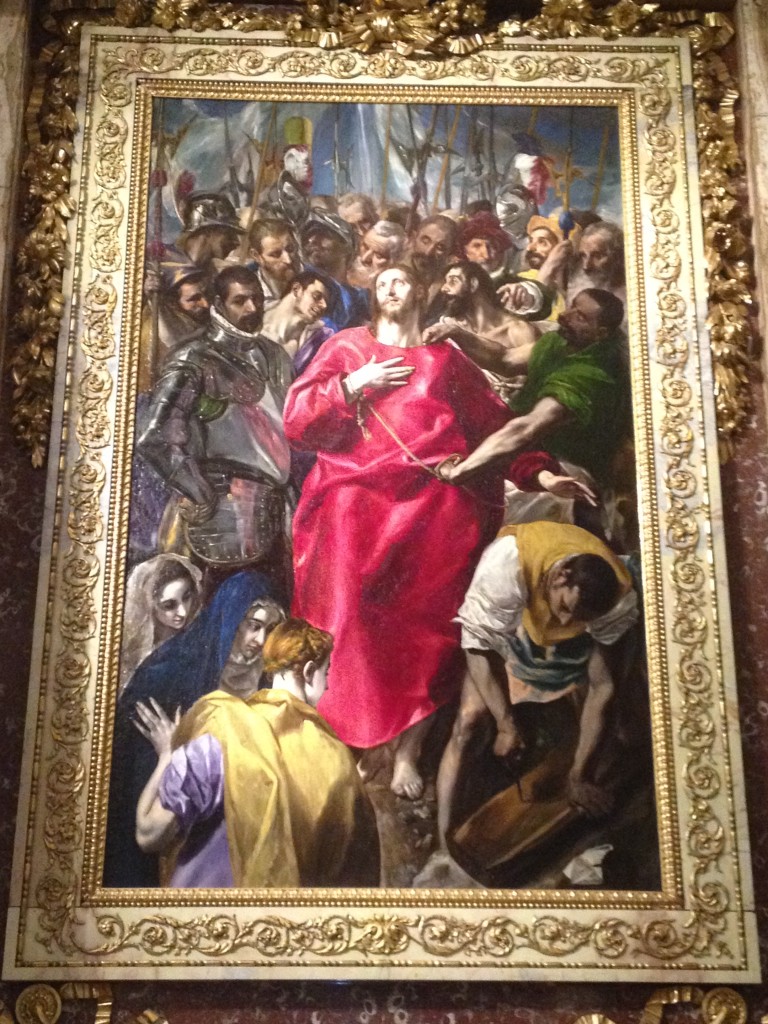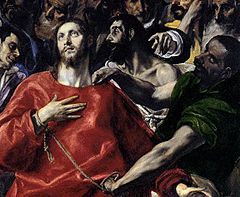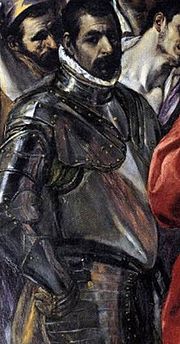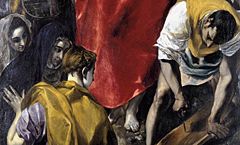In the spring of 1577 Domenikos Theotokopoulos arrived in Toledo, just a little bit later, on June 2, he received from García de Loaysa 13.600 maravedies (currency at the time) to start painting “El Expolio” and there began the story of the Cretan painter in Toledo. Together with “The burial of the Count of Orgaz”, this is the most important work of this painter, the crowning of all his pictoric work and to which we devote these lines today.
Picture of the masterwork “El expolio de Cristo” at the Cathedral of Toledo, once restored at the Museo del Prado in Madrid
As we were saying, in 1577 Toledo’s Cathedral Canonry asked the Cretan painter for a canvas representing the disrobing of Christ before being crucified. The painting was intended to be at the sacristy wardrobe (today at the high altar) where the disrobing achieved great symbolism.
The figure of Christ stands out in the centre of the canvas covered by an intense red cloak that symbolizes the martyrdom, the undaunted face of Christ looking at the skies shows the serenity and resignation to face his fate. Claim our attention the color of the cloak and how the hand is placed over the chest, two Venetian painting characteristics that, without any doubt, influenced the style of El Greco those days.
Among all the characters surrounding the main figure, some of them can be distinguished because of the color of their clothes (very Venetian). On the right, a man wearing green trying to remove the cloak to a lost in thoughts Jesus Christ. Below, a man in a yellow robe makes the holes in the wood where Jesus Christ is about to be crucifixed. And in the left side, not remarkable by the color but because of the reflection that the red cloak makes in the armor, we find a completely anachronic character, because at that time there were no armors, but this is one of the characteristics of el Greco´s paintings.
The group of people on the left bottom side was very controversial, even provoking the Canonry insatisfaction as the representation of the three Marys was not in the Bible and it was considered inappropriated. Finally, after a lawsuite (one among others) the painter acquitted himself and his relationship with the church kept the same.
One more thing to highlight is that on the bottom right side there’s a paper where we can read the signature: Domenikos Theotokopoulos.
There are many replicas of El Expolio, the original painting is at Toledo Cathedral, where it was painted and where it has always been from September 14, 1579. The masterpiece recently abandoned the cathedral walls to be restored and Rafael Alonso, restorer at Museo del Prado, comments this fact in this video (Sorry, Spanish version only but you can try subtitles).



